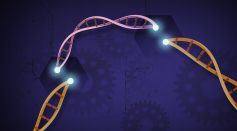TECH & INNOVATION

Genome Editing for Microbiomes Available Soon Through New CRISPR Development

Directed Systems Limited Announces a Brand-New Version of, and FDA 510(k) Clearance for, Its Operating Room Solution Hypotension Decision Assist (HDA)®

Fuel Change with Your Choice at the Pump
Pulsar Fusion: British Company to Rival SpaceX, Blue Origin With Groundbreaking High-Powered Rocket Engines

3D-Printed Steaks Now Being Served in Over 30 Restaurants Across Europe: Does It Pass the Taste Test?

Smiths Detection Collaborates With Microsoft and Heathrow to Develop AI Tool to Uncover Wildlife Trafficking

Paracrine Receives Full FDA Approval of Investigational Device Exemption (IDE) to Launch a U.S. Pivotal Trial in Patients With Diabetic Foot Ulcers

Ameca: British Lab's Humanoid Robot with Bizarre, Human-Like Facial Expressions Unveiled in the U.K.

Renewable Energy Essential to Sustainability Strategies
Is the World Unreal? Elon Musk, Neil DeGrasse Tyson Theory That the Universe Is a Simulation Proven Wrong

Elsevier And ISES Announce Coldbox Store As This Year’s Renewable Transformation Challenge Prize Winner

Radiobotics And vRad Strengthen And Expand Their Partnership

Engineers Built a Falcon-Like Drone That Perch and Carry Objects Like a Bird

SpaceX's Starlink is Offering Space-Based Internet Service to Airlines; Testing Now Underway
Most Popular

Starlink Satellite Explodes in Orbit; SpaceX Confirms It'll Re-Enter Earth

Aurora Phenomenon: How Geomagnetic Storms and Space Weather Are Lighting Up the World

What Causes Monsoons? How Seasonal Winds Shifts and Climate Patterns Drive Rainfall

How Wildfires Start, Spread, and Ignite: Understanding the Causes and Fire Behavior Clearly





